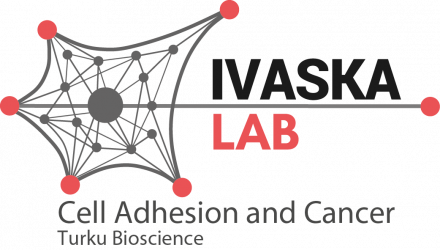Integrins are vital cell adhesion receptors with the ability to transmit extracellular matrix (ECM) cues to intracellular signalling pathways. ECM-integrin signalling regulates various cellular functions such as cell survival and movement. Integrin signalling has been considered to occur exclusively from…
Regulation of Cell Migration and β1 Integrin Trafficking by the Endosomal Adaptor GGA3 by Colin D H Ratcliffe et al.
The integrin family of cell adhesion receptors link extracellular matrices to intracellular signaling pathways and the actin cytoskeleton; and regulate cell migration, proliferation and survival in normal and diseased tissues. The subcellular location of integrin receptors is critical for their…
Selective integrin endocytosis is driven by interactions between the integrin α-chain and AP2 by Nicola De Franceschi et al.
Integrins are heterodimeric cell-surface adhesion molecules comprising one of 18 possible α-chains and one of eight possible β-chains. They control a range of cell functions in a matrix- and ligand-specific manner. Integrins can be internalized by clathrin-mediated endocytosis (CME) through…
Mutually Exclusive Roles of SHARPIN in Integrin Inactivation and NF-κB Signaling by Nicola De Franceschi et al.
SHANK-associated RH domain interactor (SHARPIN) inhibits integrins through interaction with the integrin α-subunit. In addition, SHARPIN enhances nuclear factor-kappaB (NF-κB) activity as a component of the linear ubiquitin chain assembly complex (LUBAC). However, it is currently unclear how regulation of…
Integrin endosomal signalling suppresses anoikis by Jonna Alanko et al.
Integrin-containing focal adhesions transmit extracellular signals across the plasma membrane to modulate cell adhesion, signalling and survival. Although integrins are known to undergo continuous endo/exocytic traffic, the potential impact of endocytic traffic on integrin-induced signals is unknown. Here, we demonstrate…
Formin-like 2 Promotes β1-Integrin Trafficking and Invasive Motility Downstream of PKCα by Ying Wang et al.
Regulated turnover of integrin receptors is essential for cell adhesion and migration. Pathways selectively regulating β1-integrin recycling are implicated in cancer invasion and metastasis, yet proteins required for the internalization of this pro-invasive integrin remain to be identified. Here, we…
Filopodia in cell adhesion, 3D migration and cancer cell invasion by Guillaume Jacquemet et al.
This review discusses recent advances in our understanding of the role filopodia and filopodia-like structures in cell adhesion and three dimensional (3D) cell migration both in vitro and in vivo. In particular, we focus on recent advances demonstrating that filopodia…
Vimentin-ERK Signaling Uncouples Slug Gene Regulatory Function by Reetta Virtakoivu et al.
Epithelial-mesenchymal transition (EMT) in cells is a developmental process adopted during tumorigenesis that promotes metastatic capacity. In this study, we advance understanding of EMT control in cancer cells with the description of a novel vimentin-ERK axis that regulates the transcriptional…
